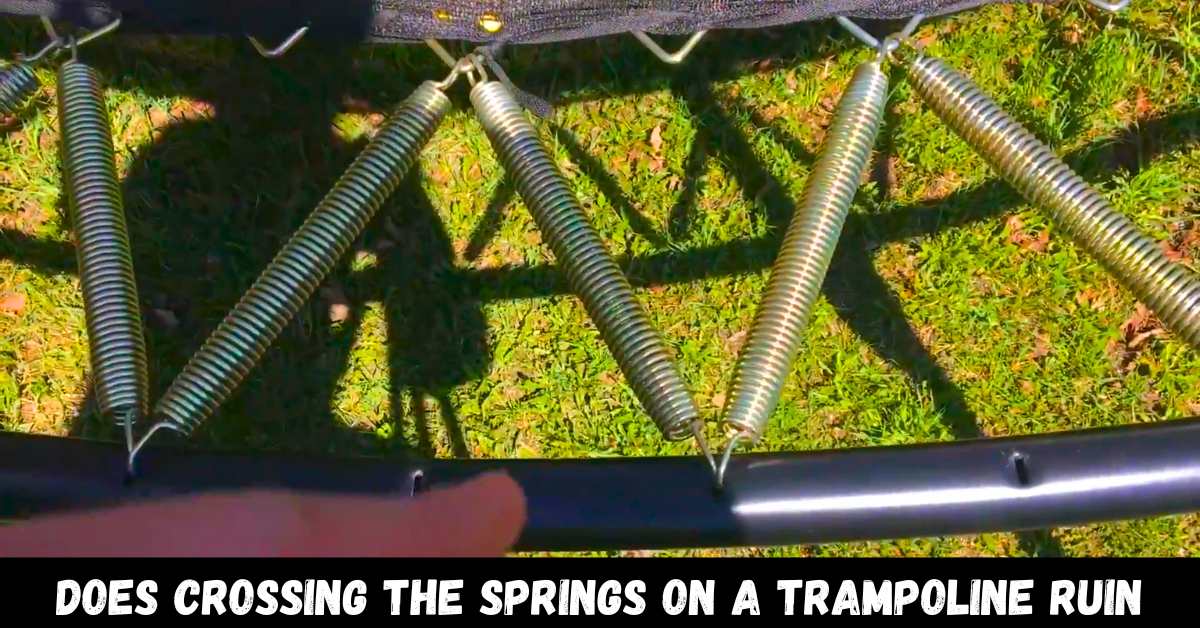Do you know, “Does crossing the springs on a trampoline ruin it?” Crossing the springs on a trampoline can potentially have detrimental effects on its performance and durability.
When the springs become tangled or overlapped, it compromises the trampoline’s ability to provide a safe and enjoyable bouncing experience. I have come to understand the importance of properly maintaining the springs.
When the springs are crossed, they endure increased stress and strain, resulting in reduced bounce and uneven weight distribution on the trampoline mat. Moreover, the risk of spring damage or breakage rises significantly, posing safety hazards for anyone using the trampoline.
To ensure the trampoline’s longevity and users’ safety, it is crucial to avoid crossing the springs and promptly address any tangling or overlap issues that may arise.
By prioritizing the proper care and maintenance of the springs, we can continue to enjoy the exhilarating experience of bouncing on a trampoline for years to come.
Does crossing the springs on a trampoline ruin it: Crossing them on a trampoline is not recommended. It can cause faster stretching, damage to the mat fasteners and frame, and lead to accelerated rusting due to coating damage.
Does Crossing the Springs on a Trampoline Ruin it?
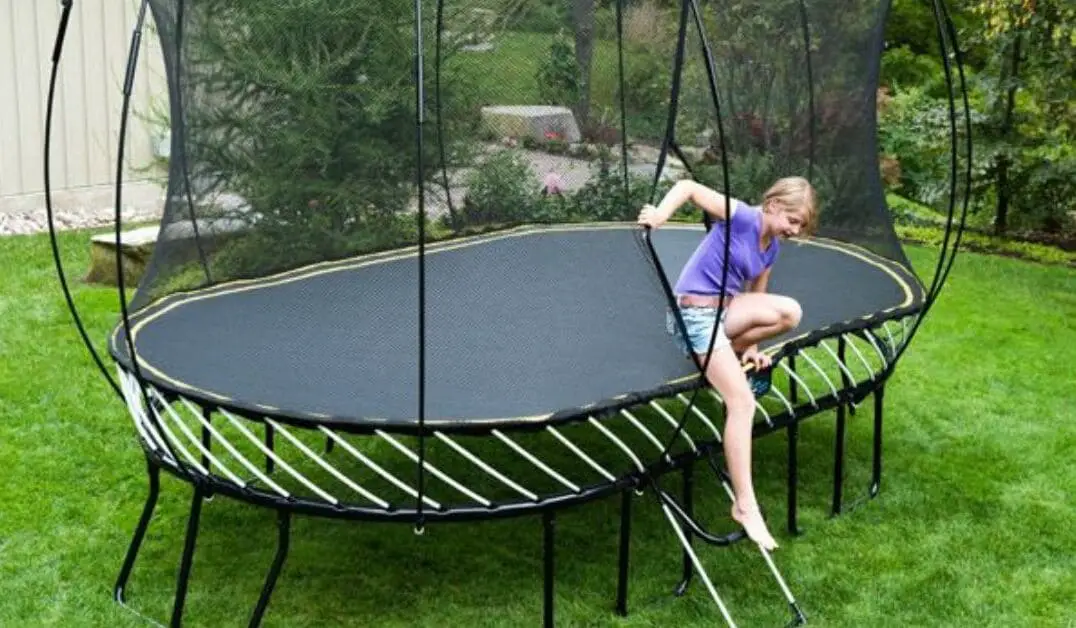
Yes, crossing the springs on a trampoline can indeed ruin it. The springs are not designed to be crossed, and doing so can lead to various issues. Crossed springs can stretch faster, causing damage to the trampoline mat fasteners and the frame itself.
Moreover, the coating on the springs can be compromised, resulting in faster rusting. These factors not only affect the performance and durability of the trampoline but also pose safety risks to users.
To maintain the trampoline’s integrity and ensure a safe bouncing experience, it is important to avoid crossing the springs and promptly address any issues related to their alignment and condition.
What does it mean to Cross the Springs on a Trampoline?
Trampolines are a fun way to stay active, but installing them correctly is crucial for safety and performance. One way to do this is by “crossing the springs.” This means connecting the springs together to make a stronger and more stable trampoline.
Crossing the springs helps distribute weight evenly, making the trampoline more durable. It also makes the trampoline bouncier by reducing spring tension. This technique uses materials like wire or chain to securely wrap around the springs and connect them to the frame.
Crossing the springs ensures a safer, more enjoyable trampoline experience. So, when installing a trampoline, remember to cross the springs for the best results.
What are the Steps to Cross the Springs on a Trampoline?
You can cross the springs to make your trampoline more bouncy and fun. It’s easy to do:
- Start by removing the safety net and exposing the trampoline springs.
- Use pliers to unscrew the springs from their current position.
- Take each spring and twist its ends in opposite directions to cross them.
- Ensure the tension is even and avoid twisting the springs too tightly.
- Repeat this process for all the springs on the trampoline.
- Once all the springs are crossed, reattach them by replacing the screws.
- Put the safety net back on the trampoline.
- Double-check that the springs are securely in place before jumping on the trampoline.
- Crossing the springs will make the trampoline bouncier and enhance the overall enjoyment of using it.
Tips for Increasing the Bounce of Your Trampoline
Crossing the springs on a trampoline is crucial for a fun and safe bouncing experience. Here are some easy tips to enhance the bounce and longevity of your trampoline:
- Cross the Springs: Crossing the springs reduces tension, allowing them to store more energy for a better bounce. Ensure you buy the right springs and place them correctly.
- Even Weight Distribution: Crossing the springs helps distribute weight evenly, making the trampoline more durable and longer-lasting.
- Proper Maintenance: Regularly inspect the springs and frame for damage. Replace worn or damaged springs and clean the trampoline regularly. Store it in a dry place when not in use.
- Use a Mat Protector: Protect the trampoline mat from wear and tear by using a mat protector.
- Secure the Trampoline: Ensure the trampoline is securely anchored to the ground and avoid overcrowding.
By following these tips, you’ll maximize the enjoyment and safety of your trampoline. Don’t forget to cross the springs and maintain your trampoline properly!
Key Components of a Trampoline
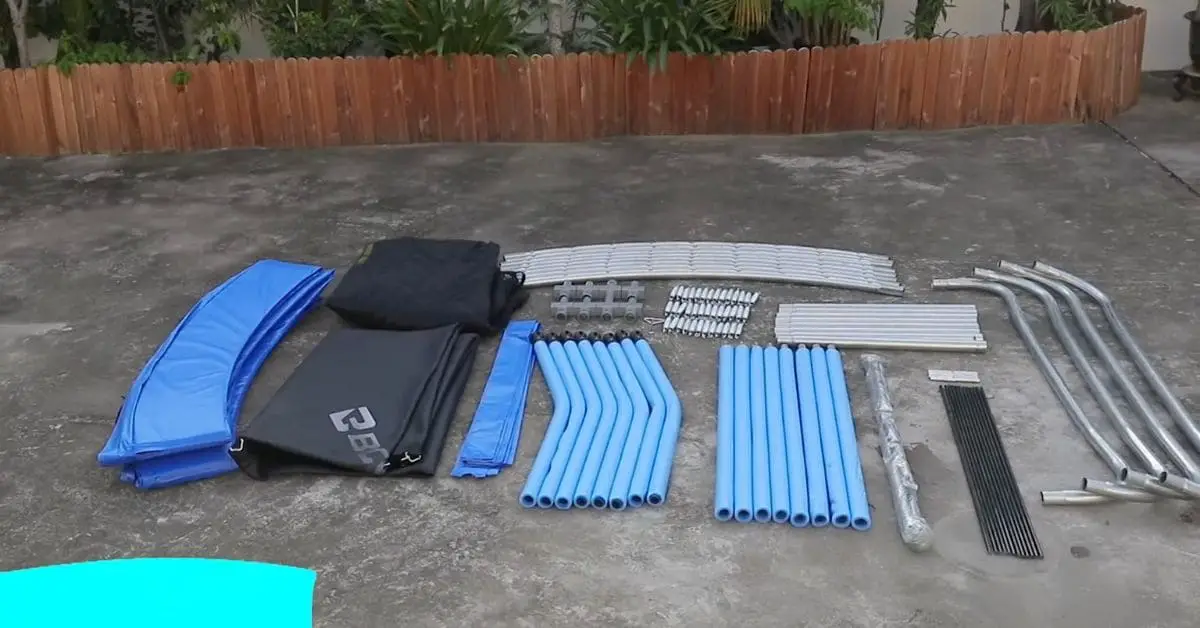
When it comes to a trampoline, there are only a few main parts to consider. These include the mat, the springs, and the frame.
The frame consists of a circular shape where the springs are connected, along with the legs that support the trampoline.
Despite its size, a trampoline has a limited number of components. So, if you notice a decrease in bounce, there are only a few areas to investigate for potential issues.
Dealing with Missing Springs on a Trampoline
My kids love bouncing near the sides of our trampoline, which gives them extra bounce. However, this can lead to missing springs in the future. Bouncing near the springs can damage the stitching that holds them in place and cause them to come loose.
When the springs come off, they can fly off and be very dangerous. Thankfully, nobody has been hurt so far, but as our kids continued bouncing along the outside, we lost more and more springs.
Missing springs result in less bounce on the trampoline, so it’s important to replace them. If the rings holding the springs are also missing, you may eventually need to replace the mat as well.
Dealing with a Ripped Trampoline Mat
The springs are vital for a trampoline’s performance, but the mat is also crucial. While a ripped mat may not directly impact the bounce, there are reasons why it can affect the experience:
Avoiding Ripped Areas:
When the mat rips, we tend to stay away from that specific spot on the trampoline. Most rips occur in the middle or near it, where the best bounce happens. So, a rip in the middle means you won’t get the optimal bounce.
Rips Can Worsen:
If we don’t address a rip promptly, it will progressively get bigger. As the rip expands, you’ll start jumping less frequently or with less intensity. Ultimately, a rip hinders you from achieving the maximum bounce from the trampoline.
It’s crucial to replace a ripped mat promptly to prevent the rip from worsening.
Improving the Bounce of a Trampoline
You can try a few methods to make your trampoline bouncier, mainly focusing on adjusting the setup of the springs. Here are some recommendations:
- X-Shaped Springs: Cross the springs over each other to create an X shape. This can enhance the bounce, but keep in mind that it may also lead to faster wear and tear of the springs.
- V-Shaped Springs: Insert two springs into a single hole on the trampoline frame, then attach the springs to rings that are two spaces apart. This creates a V shape and can contribute to improved bounce.
- W-Shaped Springs: Attach a spring to the ring on the trampoline mat and add two more springs to the frame, forming a W shape. This arrangement can help optimize the bounce.
Remember to carefully adjust the springs and ensure they are securely attached to prevent accidents or damage. Experimenting with these techniques can help you find the setup that provides the best bounce for your trampoline.
Dealing with Rusted Trampoline Springs
Trampoline springs are crucial in providing the bounce you enjoy while jumping. However, when springs become rusted, it can significantly impact the bounce experience.
Rusting occurs when the springs are exposed to moisture, such as rain, and aren’t properly dried. To prevent rust, it’s important to take proactive measures.
One effective way to prevent rust is by using a trampoline spring cover. This cover shields the springs from moisture and helps maintain their condition. Consider searching for the best spring cover suited for your trampoline.
In case you can’t plan ahead and your springs have already rusted, it’s essential to address the issue. Rusted springs do not perform as well as regular ones, resulting in reduced bounce. To restore the trampoline’s full bounce, you must replace the rusty springs with new ones.
You can maintain optimal bounce performance on your trampoline by preventing rust or promptly addressing it.
Dealing with Worn-Out Trampoline Springs
Over time, springs, like any other object stretching and contracting, will wear out. This is similar to how a slinky becomes less springy with use. Worn-out springs on a trampoline can greatly impact the quality of the bounce. The weight capacity of a trampoline depends on its size and the strength of its springs.
For example, trampolines ranging from 12 to 14 feet can typically support up to 300 pounds, while larger ones may hold up to 350 pounds. However, if the weight limit is exceeded, the springs will start to wear out.
You can identify worn-out springs when there is a visible spacing between each coil. When this happens, the trampoline will not provide the same bounce level as it used to.
Addressing a Broken Trampoline Frame
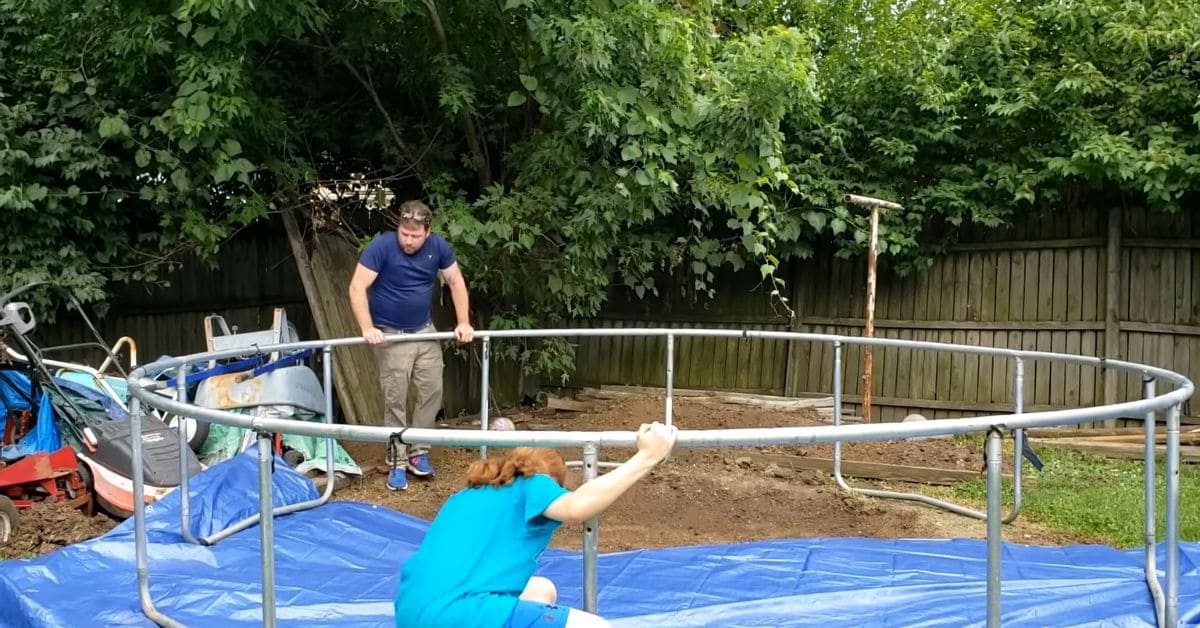
We usually avoid using something or putting any weight on it when something is broken. The same goes for a trampoline with a broken frame.
A broken frame can greatly impact the trampoline’s functionality and its ability to withstand jumping and bouncing.
Even a seemingly minor bend in the metal frame or leg can affect the trampoline’s performance. Understanding that all parts of the frame are crucial in ensuring a safe and enjoyable bouncing experience is important.
Continuously using a trampoline with a broken frame can worsen the damage over time. Therefore, addressing any issues with the frame is necessary to maintain the trampoline’s functionality and safety.
Experimenting with Trampoline Spring Arrangements
If you want to make your trampoline more bouncy, you can start by changing how the springs are arranged. You can achieve that extra bounce you desire by simply moving the springs around. Here are different ways to arrange the springs to enhance the trampoline’s bounce.
The W-Shaped Spring Configuration:
The W-shaped spring configuration is a variation of the V-shaped configuration. All three springs are used in this setup instead of leaving one out. The process is similar to the V configuration but with an additional step.
Instead of omitting the third spring, it is placed in the middle of the V shape. This means that three springs will be connected to one triangular ring on the trampoline mat, which will be attached to three different holes on the frame.
Boosting Bounce with the Double X Setup:
To achieve the Double X configuration, you can follow these steps. Begin by removing four springs from the holes on the frame while keeping them connected to the trampoline mat.
Take the rightmost spring on the outer side and stretch it diagonally across, skipping two holes in the frame. Repeat this process with the next spring in line, skipping two holes and attaching them to the frame. This will form a pattern that resembles.
Next, pull the remaining two springs over the first two springs, again skipping two holes for each spring. This will result in a double X pattern, where each line of the X has two arms instead of just one. This configuration enhances the bounce of the trampoline.
The V-Shaped Spring Configuration:
The V-shaped spring configuration is a great way to increase the bounce on your trampoline. You’ll need a spring puller or an extra spring to set it up. Start by selecting three adjacent springs and remove them from the trampoline.
Keep one of the removed springs aside. This will leave you with three empty triangle rings on the trampoline mat and three empty holes on the frame.
Take two of the removed springs and attach their hooks to the middle triangle ring on the mat. Stretch these two springs towards the holes on the frame located on either side of the hole directly across from the triangle ring where you attached the springs.
This will create an upside-down V shape from your viewpoint. Repeat this process with the next set of three springs. You may notice that not every hole or triangle ring is used, so you’ll have extra springs remaining.
The X Spring Configuration:
The X spring configuration is a great way to increase the bounce of your trampoline. It involves crossing the springs in an X shape, which adds more tension and enhances the bouncing experience.
The advantage of this configuration is that it utilizes all the rings and holes on the trampoline, minimizing stress on the mat and frame while maximizing the spring tension.
To set it up, simply detach two springs from their original positions on the frame and reattach them in the opposite holes, forming an X shape. Repeat this process for all the springs around the trampoline.
Considerations for Spring Configurations:
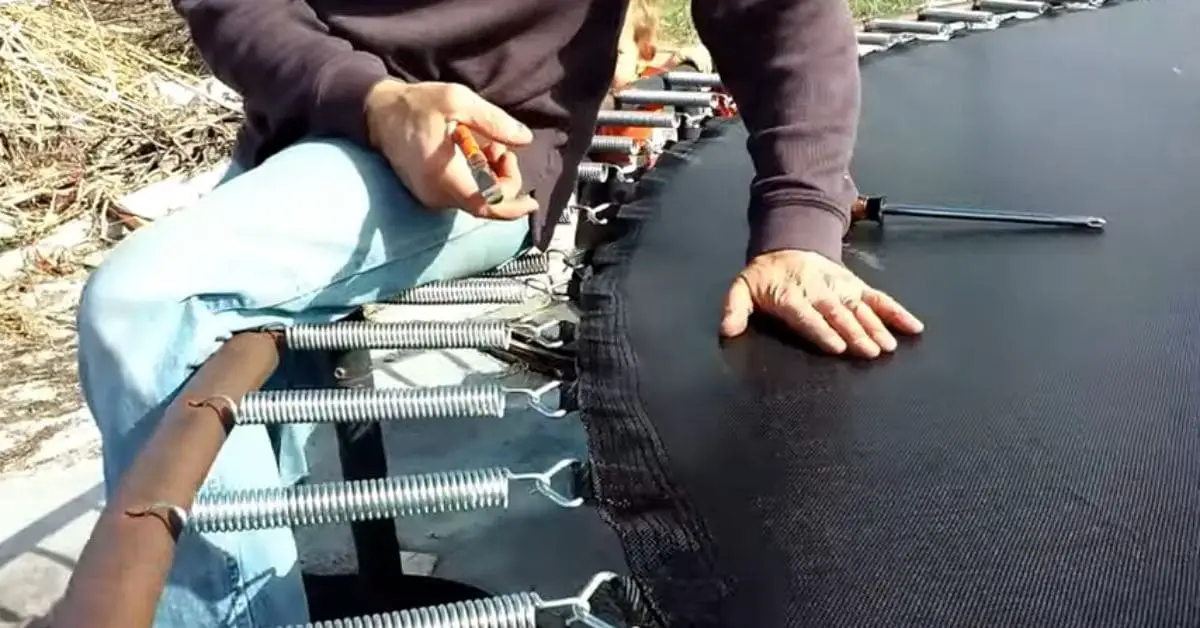
Please be aware that experimenting with different spring configurations on your trampoline carries certain risks.
It can potentially accelerate the wear and tear of the springs and other components, especially if your trampoline is older.
If you decide to try any of the configurations mentioned above, using a protective mat over the springs is highly recommended. Taking these precautions will help minimize the likelihood of damage or breakage.
Safety Precautions to Consider
Safety should always be the top priority when using a trampoline. Here are some important precautions to keep in mind:
Proper Assembly:
Ensuring that the trampoline is assembled correctly and that all parts are securely tightened is crucial. This includes following the manufacturer’s instructions and using the appropriate tools to assemble the trampoline.
Proper assembly ensures stability and reduces the risk of accidents caused by loose or unstable components.
Safety Accessories:
Using safety accessories such as a safety net, ladder, and padding can greatly enhance trampoline safety. A safety net encloses the jumping area and prevents users from falling off the trampoline.
A ladder provides a safe, controlled way to access and exit the trampoline. Padding covers the springs, frame, and any hard edges, minimizing the impact of accidental falls and collisions.
Even Surface:
Placing the trampoline on a flat, stable surface is essential for maintaining balance and stability. A level ground free from slopes, bumps, or debris reduces the risk of the trampoline tipping over or users losing their balance during jumping.
Additionally, an even surface ensures an even weight distribution across the trampoline, enhancing safety.
Adult Supervision:
It is important to have a responsible adult supervise whenever the trampoline is being used, especially when children are involved. An adult can monitor the activities, enforce safety rules, and provide assistance if needed.
Their presence helps prevent reckless behaviour and ensures immediate response to any potential safety concerns.
Safety Gear:
All trampoline users should wear appropriate safety gear, such as helmets and pads. Helmets protect the head from impact injuries, while pads on elbows and knees cushion potential falls and reduce the risk of abrasions or bruises.
Wearing safety gear provides extra protection and minimizes the risk of severe injuries.
Avoid Overcrowding:
Limiting the number of people on the trampoline is important to avoid overcrowding. Overcrowding increases the risk of collisions and accidents.
Users should maintain a safe distance from each other to prevent accidental contact during jumps. Following the recommended weight and occupancy limits can significantly reduce the risk of injuries.
Protective Gear:
Wearing additional protective gear is highly recommended when crossing springs or engaging in advanced trampoline activities. This may include specialized knee and elbow pads, wrist guards, or ankle supports.
The protective gear provides an extra layer of cushioning and support, reducing the risk of injuries during high-impact movements.
Clear Space:
Ensure there is sufficient space around the trampoline to avoid any obstructions or hazards. Remove any objects or obstacles that may pose a risk to users while jumping.
Clearing the surrounding area of the trampoline helps prevent accidental collisions with structures, trees, or other items that could cause injuries.
You can enjoy a safe and enjoyable trampoline experience by following these safety tips.
Factors Influencing the Severity of Damage
The severity of damage to a trampoline can vary depending on several factors. These factors are crucial in determining how much damage is incurred and how quickly it may worsen. Here are some key factors that influence the severity of the damage:
Duration of Spring Crossing:
The longer the springs are crossed, the more strain they endure. Over time, this continuous stress can lead to increased wear and tear, potentially damaging the springs or other trampoline components.
Weight and Frequency of Use:
The weight of users and the frequency of trampoline use can impact its durability. Excessive weight or frequent heavy use can put additional stress on the trampoline, increasing the likelihood of damage.
Quality and Condition of the Springs:
The quality and condition of the springs themselves play a significant role in determining the severity of the damage. If the springs are of low quality or weakened, they may be more susceptible to damage or failure.
Design and Construction of the Trampoline:
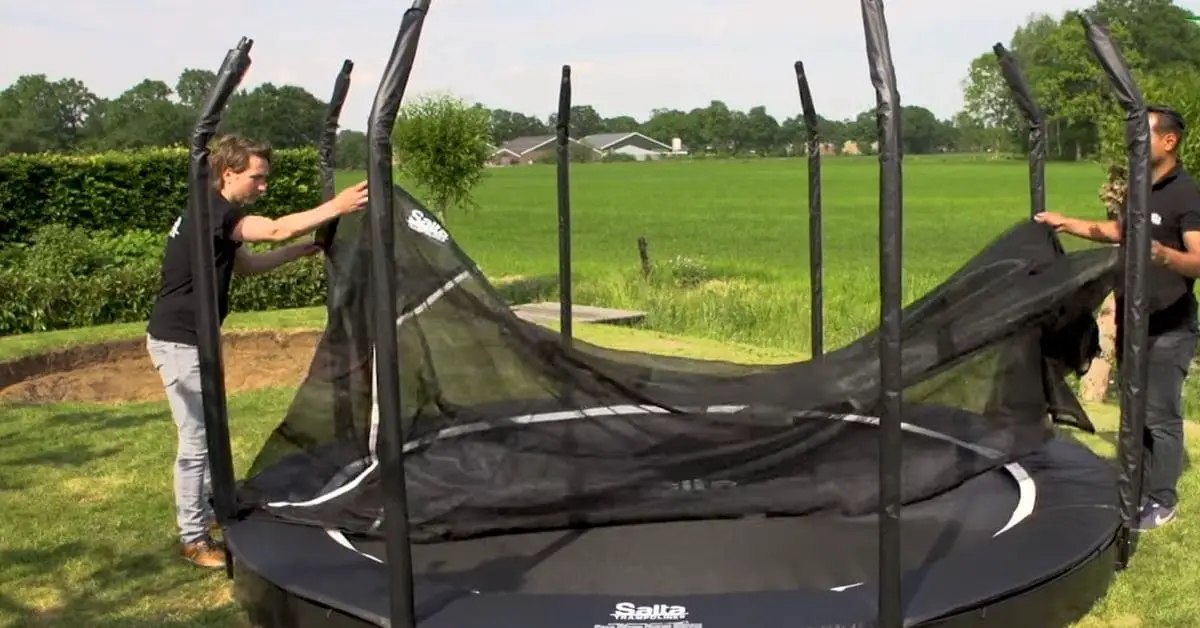
The overall design and construction of the trampoline can influence its resilience to damage.
Trampolines with sturdy frames, strong springs, and durable mat materials are generally more resistant to severe damage.
Neglecting to address spring crossing can exacerbate the damage over time. The tension on the trampoline components increases when the springs remain crossed for extended periods.
This prolonged stress can lead to accelerated wear and tear, potentially causing the springs to lose their elasticity or even break. As a result, the trampoline’s bounce quality may deteriorate, and the risk of further damage or injury could increase.
To mitigate the risk of worsening damage, it is important to address spring crossing promptly. Regularly inspect the trampoline, untangle crossed springs, and ensure they are properly aligned and tensioned.
Maintaining proper spring alignment and promptly addressing any issues can help preserve the trampoline’s performance and longevity.
Preventive Measures
Taking proactive steps to prevent damage to your trampoline ensures its longevity and safety. Here are some preventive measures you can follow:
Recommendations to Prevent Spring Crossing
To prevent spring crossing and minimize potential damage, consider implementing the following measures:
Educate Trampoline Users:
Teach all trampoline users, especially children, about the importance of avoiding spring crossing. Explain that crossing the springs can lead to increased wear and tear and potential safety hazards.
Encourage Proper Jumping Techniques:
Emphasize the importance of using proper jumping techniques, such as jumping in the centre of the mat and avoiding jumping too close to the edges or near the springs. This can help minimize the risk of spring interference.
Regular Inspections:
Regularly inspect your trampoline to identify any instances of spring crossing. Carefully examine the positioning of the springs and ensure they are properly aligned. If you notice any spring crossing, rectify it promptly by adjusting the springs to their correct positions.
Follow the Manufacturer’s Guidelines:
Adhere to the manufacturer’s guidelines for trampoline setup and maintenance. These guidelines often include specific instructions on spring placement and configuration.
By following these instructions, you can help prevent spring crossing and maintain the optimal performance of your trampoline.
Benefits of Preventive Measures
Implementing these preventive measures offers several benefits, including:
Extended Lifespan:
You can reduce unnecessary strain on the springs and other trampoline components by preventing spring crossing. This helps extend the overall lifespan of your trampoline, allowing you to enjoy it for a longer period.
Enhanced User Safety:
Using the trampoline, minimizing spring crossing decreases the risk of accidents and injuries. Properly aligned springs provide a safer jumping experience, ensuring that users can enjoy the trampoline without unnecessary risks.
Improved Trampoline Performance:
When springs are not crossed or interfering with each other, the trampoline can perform optimally, providing a consistent and enjoyable bouncing experience. Preventive measures help maintain the trampoline’s intended design and functionality.
By implementing these preventive measures, you can promote the longevity of your trampoline and create a safer environment for trampoline users.
Repairing and Replacing Springs
Here are some things to repairing and replacing springs:
Addressing Crossed Springs
When spring crossing occurs on a trampoline, it is essential to address the issue promptly. Crossed springs can lead to uneven tension, reduced bounce, and potential damage to the trampoline. Neglecting to rectify crossed springs can worsen the problem over time.
Steps for Repairing or Replacing Crossed or Damaged Springs
If you encounter crossed or damaged springs, follow these steps to restore the functionality of your trampoline:
- Identify the Crossed Springs: Carefully examine the springs to identify which ones are crossed or entangled with each other.
- Untangle or Separate the Crossed Springs: Using proper techniques and tools like spring pullers or pliers, carefully untangle the crossed springs. Gently separate them to restore their original position.
- Check for Damage or Deformities: Inspect the crossed springs for any signs of damage, such as rust, deformities, or weakened areas. Assess the extent of the damage to determine if repair or replacement is necessary.
- Repair or Replace Damaged Springs: If the crossed springs show minor issues like rust or deformation, you may be able to repair them. Remove rust with sandpaper or a wire brush, reinforce weak areas with spring clamps, or apply lubrication to enhance their performance.
However, if the springs are severely damaged or broken, it is best to replace them entirely with new ones that are compatible with your trampoline.
Importance of Using Appropriate Tools and Seeking Professional Assistance
When repairing or replacing springs, using the appropriate tools and techniques is crucial to avoid further damage or injury. Improper handling can result in accidents or additional problems.
If you are uncertain about how to repair or replace the springs on your trampoline, it is advisable to seek professional assistance. Trampoline repair services or technicians have the expertise and experience to ensure the springs are repaired or replaced correctly and safely.
By promptly addressing crossed or damaged springs and following proper repair or replacement procedures, you can maintain the performance and safety of your trampoline for continued enjoyment.
Trampoline Maintenance and Longevity
To extend your trampoline’s lifespan, follow these tips:
Factors Influencing Trampoline Lifespan
Your trampoline’s lifespan depends on a few important things:
- Quality of Materials: The trampoline’s quality matters. If it’s made from strong and durable materials, it’s likely to last longer.
- Weather Conditions: The weather can have a big impact. If you leave your trampoline outside all year round, it might wear out faster because of rain, snow, and sun.
- Weight Limit: Trampolines have weight limits. If you regularly have more people jumping on it than it’s designed for, it can wear out quicker.
- Proper Assembly: If your trampoline is put together the right way, it’s more likely to stay safe and last longer. Follow the instructions carefully.
Routine Maintenance Practices
Taking care of your trampoline isn’t hard. Here are some simple things you can do:
- Clean It: Use a broom or a soft brush to sweep off leaves, dirt, and debris from the trampoline. This helps it stay clean and safe.
- Check for Damage: Look for any tears or holes in the jumping mat, and make sure the springs are all in place. If you spot any problems, fix them as soon as possible.
- Anchor It: If you live in a windy area, it’s a good idea to anchor your trampoline. This means attaching it securely to the ground to prevent it from blowing away.
- Safety Net: If your trampoline has a safety net, check it regularly to make sure it’s intact and properly attached. This keeps jumpers safe.
Role of Spring Care in Trampoline Longevity
Springs are super important for your trampoline’s bounce. Here’s how you can take care of them:
- Avoid Crossing Springs: When you jump on the trampoline, try not to step on or cross over the springs. This can cause them to stretch or break.
- Inspect Springs: Regularly inspect the springs for any signs of damage or rust. If you see any problems, replace them.
- Lubricate Springs: Applying a special lubricant on the springs can help prevent rust and keep them working smoothly.
- Equal Tension: Make sure the tension on all the springs is equal. This helps the trampoline bounce evenly and reduces strain on individual springs.
Taking good care of your trampoline, including the springs, will help it last longer and keep everyone jumping safely. Remember, a well-maintained trampoline is a happy trampoline!
FAQs:
Q:1 Can crossing springs make a trampoline bouncier?
Crossing the springs on a trampoline can reduce their elasticity and create gaps between each spring. This can decrease bounce height or even prevent the trampoline from returning to its original position after jumping.
Q:2 What are the causes of trampoline springs breaking?
During trampoline routines and tricks that utilize the full length of the mat and involve double bouncing and acrobatics, the weight distribution shifts towards the edge of the mat. This increased load near the edge can lead to an overload on the springs.
Q:3 Do trampolines become bouncier as they age?
Some people mistakenly believe that trampolines get bouncier with age. However, the increased bounce is actually because kids grow heavier and develop stronger leg muscles over time.
Q:4 What is the typical lifespan of a spring trampoline?
On average, a spring trampoline lasts for about three to eight years. The durability can vary depending on the quality of its components, usage, and storage conditions.
Q:5 Does having more springs make a trampoline better?
In general, longer and more springs on a trampoline result in a better bounce. Choosing galvanized springs can also increase their durability over time.
Conclusion:
In conclusion, crossing the springs on a trampoline can have negative effects on its performance and longevity. When the springs are crossed, they lose their elasticity and can create spaces between each spring.
This can result in a decreased bounce height or even a complete loss of bounce. It is crucial to promptly address any spring crossing issues to maintain the trampoline’s functionality.
Furthermore, crossing the springs can lead to increased stress on the trampoline frame, which may cause it to wear down quicker or even break.
To prevent spring crossing and maintain optimal trampoline performance, it is important to follow proper trampoline usage guidelines, such as avoiding excessive weight on the trampoline and using appropriate jumping techniques.
Regular inspections should be conducted to identify any spring crossing and rectify the issue promptly. Additionally, using high-quality springs and ensuring proper trampoline maintenance can help prolong its lifespan.
We hope you will know whether crossing the springs on a trampoline ruins it. After reading this comprehensive article. If you have any questions, feel free to comment below!

